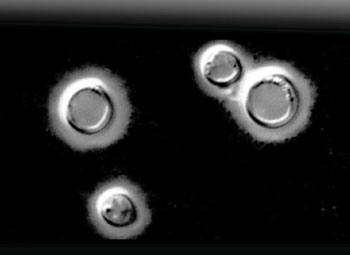Blood Culture Media Evaluated For Detection of Pathogenic Fungi
By LabMedica International staff writers
Posted on 21 Jan 2015
A growing number of fungemia cases have been observed in recent decades and Candida species have been placed as the fourth most common microorganism isolated from blood samples. Posted on 21 Jan 2015
Many cases of invasive mycoses, including invasive candidiasis, remain undiagnosed, mostly because of the insufficient sensitivity of blood cultures, which has been estimated as low as 50%. In order to improve the early diagnosis of invasive fungal diseases, several serological tests detecting fungal biomarkers, such as antigens, DNA, or specific antibodies, have been developed, of which only a few have gained acceptance for routine diagnostics.
Microbiologists at the Medical University of Wroclaw (Poland) compare the utility of different media in the detection of fungi from simulated tests obtained by the inoculation of tested media first with sterile sheep’s blood and subsequently with one of 60 clinical yeast isolates and clinical blood samples, taken during routine diagnostic examination in two hospitals.
The blood culture bottles BACTEC Mycosis-IC/F (Mycosis), BACTEC Plus Aerobic/F (Aerobic), and BACTEC Plus Anaerobic/F (Anaerobic) (BACTEC; Dartford, UK) were inoculated aseptically with sterile sheep’s blood and subsequently with of fungal suspension containing 10 to 20 fungal cells. The samples were immediately placed in the compartment of the BACTEC 9240 Blood Culture System (Becton, Dickinson and Company; Franklin Lakes, NJ, USA) and incubated until positivity, 5 days for Aerobic and Anaerobic, and 14 days for Mycosis.
All tested strains grew on Mycosis as well as Aerobic bottles, and the time to detection obtained for Mycosis was significantly shorter. The largest differences in the time to positivity were found for Candida glabrata and Cryptococcus neoformans, when Mycosis preceded Aerobic in 20 to 48 hours and 0.7 to 64 hours, respectively. The media complement each other and, in 45% of clinical examination sets, a single positive medium was noted with 25% in Mycosis and 19% in Aerobic.
The authors concluded that that both Aerobic and Mycosis media serve as the correct condition for the culture of fungi and that they varied significantly in the detection time of clinically important species. This result could suggest that the simultaneous use of Aerobic as well as Mycosis media may improve the time of diagnosis in many patients, especially those infected with C. glabrata or C. neoformans. The study was published in the January 2015 issue of the European Journal of Clinical Microbiology and Infectious Diseases.
Related Links:
Medical University of Wroclaw
BACTEC
Becton, Dickinson and Company











 Analyzer.jpg)




